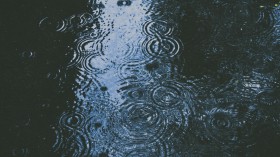Researchers are developing a new technique in which they aim a high-energy laser beam at the clouds to trigger rain and lightning.
This is no fool's errand. Water condensation and lightning activity in clouds are linked to static particles. With the right kind of laser, stimulating those particles could potentially electrify the sky or summon rain showers.
The University of Central Florida (UCF) team has not yet performed this phenomenon, but has successfully built its foundation. The current idea researchers have is surrounding the main beam with a second beam to act as an energy reservoir. This way it sustains the central beam to greater distances than previously possible, and refuels to prevent the beam from dissipating.
The challenge is being able to utilize the beam long enough before it becomes too intense and collapses on itself.
"The collapse becomes so intense that electrons in the air's oxygen and nitrogen are ripped off creating plasma - basically a soup of electrons," UCF graduate student Matthew Mills said in a news release.
For a short while, the collapsing laser and expanding plasma are stuck in a power struggle, known as filamentation. This fight for dominance creates a filament or "light string" before the air forces ultimately make the beam disperse.
The give-and-take of the laser dispersal can create electrical disturbances in clouds. The trouble was lasers powerful enough to induce stormy weather dissolved within 10 inches of the laser before they could reach the clouds.
"What would be nice is to have a sneaky way which allows us to produce an arbitrary long 'filament extension cable.' It turns out that if you wrap a large, low intensity, doughnut-like 'dress' beam around the filament and slowly move it inward, you can provide this arbitrary extension," Mills said.
So far, Mills and fellow graduate student Ali Miri have been able to extend the pulse from 10 inches to about 7 feet and are working to extend the filament even farther.
The technique's implications are detailed in the journal Nature Photonics, where researchers add that it could also be used in long-distance sensors and spectrometers to identify chemical makeup.
© 2024 NatureWorldNews.com All rights reserved. Do not reproduce without permission.





